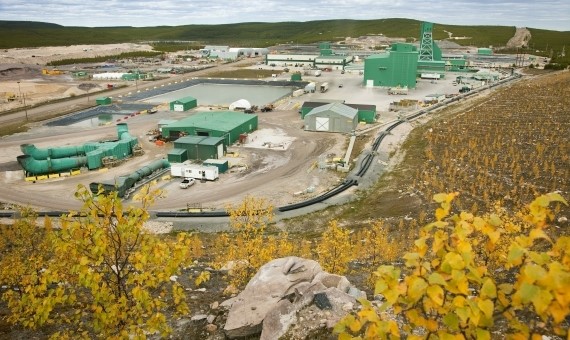Kazakh voters say “yes” to nuclear power
.png)
A historic referendum in Kazakhstan this past weekend showed that its citizens strongly support adding nuclear generation to the nation’s energy supply.

.png)
A historic referendum in Kazakhstan this past weekend showed that its citizens strongly support adding nuclear generation to the nation’s energy supply.
The Department of Energy’s National Nuclear Security Administration recently marked the completion of a new long-term radioactive waste storage facility in Kazakhstan.
The facility, at Kazakhstan’s Institute of Nuclear Physics (INP), has been operational since 2022 and has an expected lifespan of 50 years. According to the NNSA, the facility conforms with all Kazakhstan and International Atomic Energy Agency guidelines and replaces a much older facility located at an INP property in Turaz.

Rose

Hruby
The Department of Energy’s National Nuclear Security Administration reported last week that NNSA administrator Jill Hruby and principal deputy administrator Frank Rose completed a trip to Kazakhstan on October 5 to meet with the country’s government officials. The trip served as a chance for Hruby and Rose to thank the officials for the nonproliferation and nuclear security partnership that exists between the United States and Kazakhstan. According to the NNSA, notable achievements under the partnership include Project Sapphire (see more below), the conversion of three research reactors, and efforts to counter nuclear smuggling.

Barrasso
In the latest effort by the federal government to sanction Russia over its invasion of Ukraine, Sen. John Barrasso (R., Wyo.) last week introduced legislation to prohibit the importation of Russian uranium to the United States.
The Biden administration banned imports of Russian oil, liquefied natural gas, and coal, via executive order on March 8.
Barrasso’s bill, S. 3856, was introduced on March 16, with three of his fellow GOP lawmakers as cosponsors: Sens. Kevin Cramer (R., N.D.), Cynthia Lummis (R., Wyo.), and Roger Marshall (R., Kan.).
“The time is now to permanently remove all Russian energy from the American marketplace,” said Barrasso, ranking member of the Senate Energy and Natural Resources (ENR) Committee. “We know Vladimir Putin uses this money to help fund his brutal and unprovoked war in Ukraine. While banning imports of Russian oil, gas, and coal is an important step, it cannot be the last. Banning Russian uranium imports will further defund Russia’s war machine, help revive American uranium production, and increase our national security.”

Citing “improving market sentiment,” Tim Gitzel, president and chief executive officer of the Canadian uranium mining company Cameco, announced on February 9 the planned restart of operations at the McArthur River mine in Saskatchewan.

The global production of uranium should increase by 3.1 percent to reach 51.2 metric kilotons this year, due to the return of production at Canada’s Cigar Lake and other mines where work was suspended in 2020, according to GlobalData, a U.K.-based data analytics firm.
The last remaining batch of unirradiated high-enriched uranium in Kazakhstan has been eliminated, the U.S. National Nuclear Security Administration has announced.
The action fulfills a pledge made by the United States and Kazakh governments one year ago at the 2019 International Atomic Energy Agency’s General Conference, according to a September 22 NNSA news release.

Kazatomprom is extending uranium production cuts. Photo: Kazatomprom
Kazatomprom, Kazakhstan’s state-owned uranium production company, will continue “flexing down” production by 20 percent through 2022, compared to the planned levels under subsoil use contracts, the company announced last week. It will also maintain its 20 percent reduction against subsoil use contracts in 2021, with no additional production planned to replace volumes lost in 2020 due to measures taken to combat COVID-19.
Kazatomprom does not expect to return to full subsoil use contract production levels until a sustained market recovery is evident and demand and supply conditions signal a need for more uranium, the company noted.